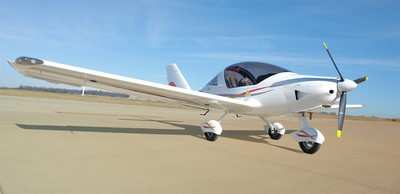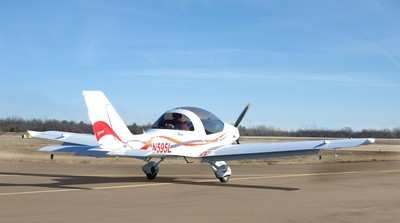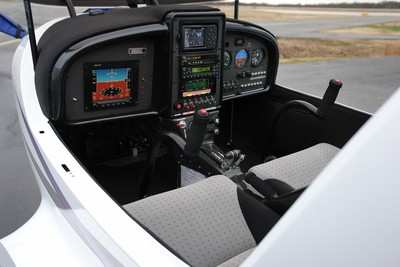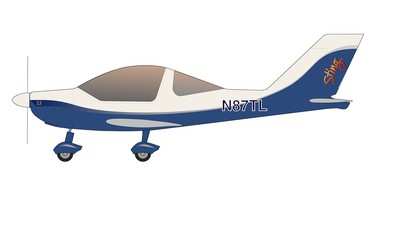Sting S3 Sports New Wing, Redesigned Trim
"A superior airplane evolves." That's how TL-Ultralight founder
Jiri Tlusty summarizes his company's newly-updated StingSport
light-sport aircraft, which features several improvements to what
was already one of the most impressive offerings in the
segment.

Leading the changes to the Sting S3 is a new, fully-tapered
wing, with increased flap length. While the new wing maintains the
same profile, wingtip and aileron design as older models, the
wingspan, wing area and aspect ratio of the S3 wing are all greater
than the original. The company says the result is a wing that
stalls at lower airspeed, climbs faster, and is more efficient.
Stall speed without flaps is 39 knots; with full flaps the stall
speed is 34 knots. Cruise speed at 75% power is 116 knots. Rate of
climb with the 100 hp engine is in excess of 1,100 feet per minute,
and take-off ground roll has been measured as low as 255 feet,
according to company representatives.

"We listen to our customers and we fly Stings ourselves," Tlusty
said. "That’s how we learn, and we introduce evolutionary
upgrades whenever we see the opportunity to do so."
The aircraft also sports redesigned elevator trim, which gives
the pilot a broader range of pitch settings and better control
coordination. Further changes include a stiffer frame for the
canopy and a stronger hinge design, re-engineered main and nose
gear assemblies, and a simplified fuel distribution system.
A new oil cooler bypass thermostat is now standard, as are a
composite tail cone to protect against ground strikes, new
quarter-turn fasteners for engine compartment access, and more
visible position lighting in the tail assembly.

As with the original Sting, both analog gauges or Dynon EFIS
D100 instrumentation is available. Other available cockpit features
include Garmin GPSMAP 496 with WX weather, SL40 radio and GTX327
transponder, and PCAS collision avoidance. AmSafe inertia reel
four-point harnesses are standard, with optional belt-mounted
airbags. A Greenline EMS engine monitoring system, designed for the
StingSport by I-K Technologies, is now standard equipment, as
well.
Many of the changes come as a result of customer input. "The
company’s openness to owner feedback and its investment in
evolutionary change are what make the Sting the most continuously
improved light sport aircraft," said Bill Canino, President of
SportairUSA, LC, the North American StingSport distributor. "This
next generation Sting S3 maximizes performance within the LSA
flight envelope."
The evolution of the Sting began in 1996 with the composite
TL-96 Star. The first generation Sting, known as the Sting Carbon,
brought the lighter weight carbon-fiber composite airplane to the
marketplace with redesigned wing and tailfeathers. For the next
generation, known as the StingSport, the airplane was modified to
take full advantage of the LSA rules and incorporated significant
safety and handling improvements.

The recent announcement of the next generation Sting S3
incorporates all of the previous upgrades, and takes a big step
forward in the evolution of the LSA. Well-equipped for
cross-country or night operation, S3 starting prices range from
$121,500 to $123,650.
 Classic Aero-TV: VerdeGo Debuts VH-3 Hybrid-Electric Powerplant
Classic Aero-TV: VerdeGo Debuts VH-3 Hybrid-Electric Powerplant NTSB Prelim: Grumman American Avn. Corp. AA-5B
NTSB Prelim: Grumman American Avn. Corp. AA-5B ANN's Daily Aero-Linx (12.02.25)
ANN's Daily Aero-Linx (12.02.25) Aero-News: Quote of the Day (12.02.25)
Aero-News: Quote of the Day (12.02.25) Aero-News: Quote of the Day (12.03.25)
Aero-News: Quote of the Day (12.03.25)






